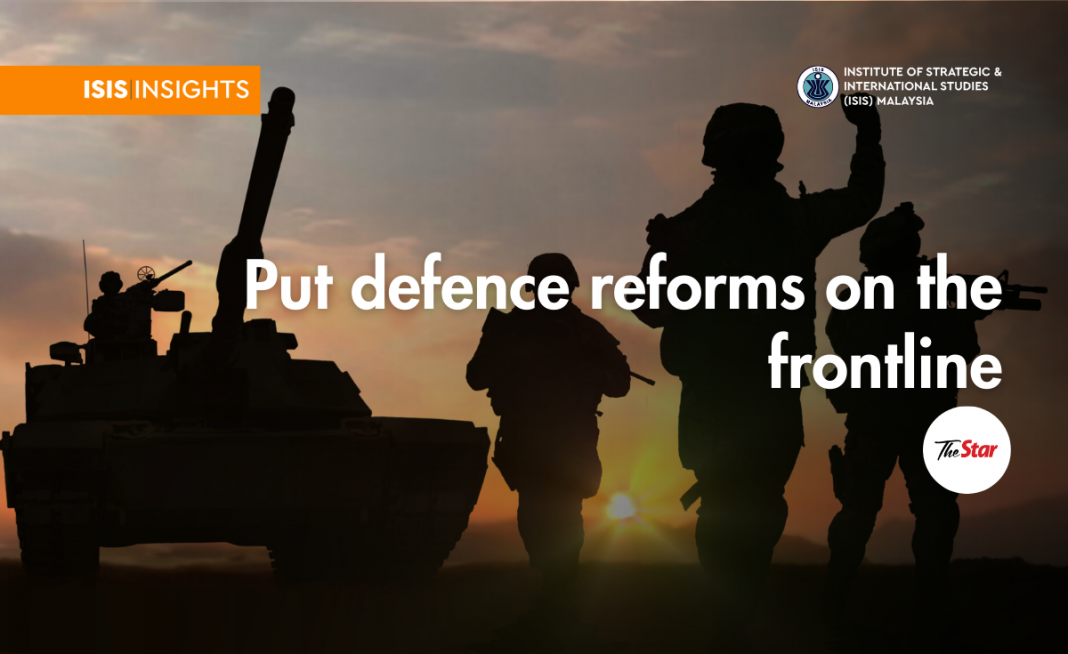MALAYSIA’S strategic defence planning and capacities are beset with challenges which have hobbled the armed forces and the country’s capability as an effective deterrent.
Many of the causes are beyond the control of the country’s defence planners. Geopolitical tensions in the region further complicate the situation, affecting both the challenges our armed forces face and key decisions on long-term cooperation and supply chains.
The defence establishment needs determined political leadership and meaningful reforms to function at the desired level of efficiency and effectiveness.
Challenges to defence planning
The procurement of assets is closely linked to defence planning and readiness. For decades, Malaysia’s defence procurement hasn’t been about deterrence or what the armed forces really need.
Rather it is subject to a nebulous definition of “national interest” – encompassing everything from improving bilateral relations with selected countries, palm oil countertrade, developing a comprehensive defence industry of our own, or projecting a particular image of the nation.
We are then left with a hodgepodge of defence assets and systems, hampered by incompatibility, reduced effectiveness, and supply chain and maintenance issues, ultimately undermining the armed forces’ ability to defend the country.
Systemic corruption and wastage, often under a similar guise of “national interest”, is another. The Littoral Combat Ships (LCS) affair is neither new nor surprising, just larger in scope and losses.
The seemingly minimal consequences for those responsible, along with inattention to Malaysia’s defence and geopolitical challenges, fuel disinterested, negative opinions of the country’s defence plans and priorities, especially among lawmakers.
It is natural that they would prioritise the allocation of resources to economic and social development, which produce more immediate political returns. This further strains Malaysia’s limited funding for defence and security – through wastage and the buying subpar or ineffective assets.
Geopolitical developments
It is impossible to ignore China and the United States’ rivalry in Malaysia’s defence planning, given the close ties Malaysia has with both countries through trade, technology, bilateral relations and defence cooperation.
Malaysia’s strategic location, straddling key maritime routes in the Straits of Malacca and the South China Sea, becomes a double-edged sword as the major powers seek to increasingly influence these maritime domains.
With increased tensions in the military sphere, including militarisation of South China Sea reclaimed features, Malaysia will have to make difficult decisions regarding who we cooperate with and to what extent.
Pressure will come from both sides and unlike trade mechanisms, Malaysia’s defence market is too small and can ill afford “everything” from “everyone”.
Policymakers must be steadfast in prioritising what is best for our defence forces, should they have to use these assets for the purpose they were designed for. Policymakers also need to consider the scale of security risks and where limited resources will have to be channelled.
The highest priority should be on our maritime and aerial spheres, where there are actual threats to Malaysia’s border security, sovereignty and exclusive economic zone (EEZ) rights. Malaysia is far behind compared to some of it neighbours which share similar threat possibilities, and we might suffer its ramifications in the coming years.
Moving forward
No one is suggesting that we spend a fifth of our budget on the armed forces at the expense of socio-economic development.
The absence of a credible level of deterrence, however, means Malaysia will be prevented from realising its legitimate interests and securing its full security. This is already happening in the South China Sea.
Reforms and changes are needed, and the elected political leadership must chart the course for Malaysia. More importantly, policymakers should avoid repeating past mistakes.
The signs from the current political leadership so far have been tentatively encouraging – Prime Minister Datuk Seri Anwar Ibrahim has publicly committed to modernising the armed forces and restructuring procurement processes to curb corruption and wastage.
This was also high on the agenda former Defence Minister Datuk Seri Mohamad Hasan before he was transferred to Wisma Putra. It is hoped that the new defence minister remains committed to undertaking the necessary reforms.
Defence expenditure has also steadily increased since 2022, especially in 2023 (RM17.7bil) and 2024 (RM19.7bil). The air force and navy are getting a bigger slice of the funds needed to buy long-delayed assets, especially domain awareness, which has been requested for nearly a decade.
A common refrain is that as a nonaligned country, Malaysia doesn’t need focus on the military or that wars are a thing of the past. The naivety of such views is dispelled by even a casual examination of global geopolitical developments and Malaysia’s challenges in its strategic spheres.
The architectures and norms that have allowed Malaysia to enjoy its peace dividend are slowly coming undone. Despite diplomacy being an effective tool for the country, credible deterrence would only bolster peace and security.
This article was first published in The Star, January 13 – January 19, 2024.





